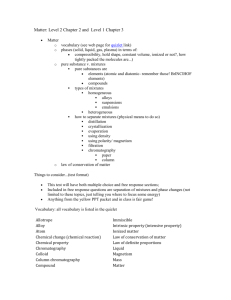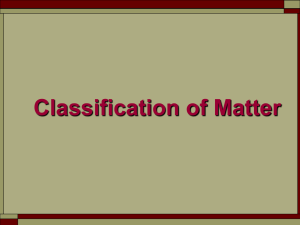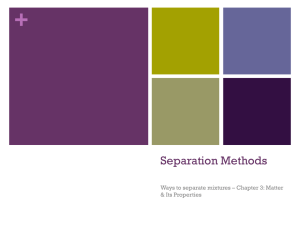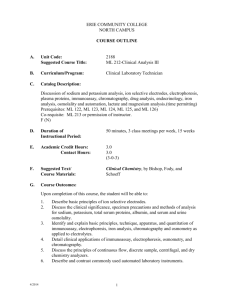Mixture Separation Lab Sheet
advertisement
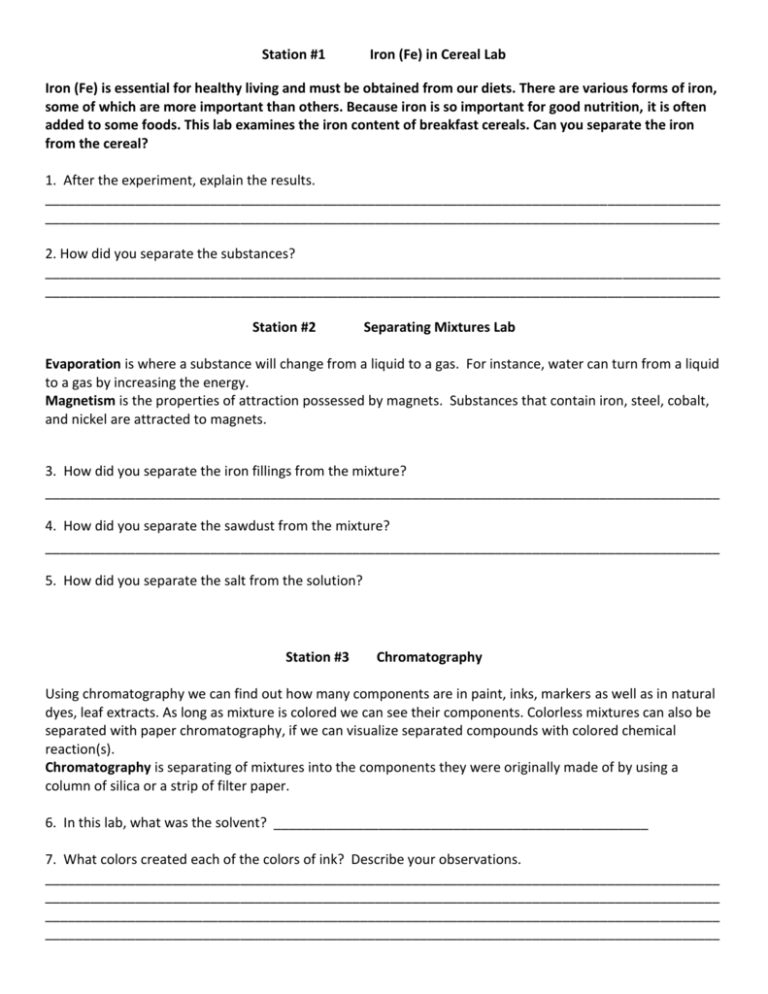
Station #1 Iron (Fe) in Cereal Lab Iron (Fe) is essential for healthy living and must be obtained from our diets. There are various forms of iron, some of which are more important than others. Because iron is so important for good nutrition, it is often added to some foods. This lab examines the iron content of breakfast cereals. Can you separate the iron from the cereal? 1. After the experiment, explain the results. __________________________________________________________________________________________ __________________________________________________________________________________________ 2. How did you separate the substances? __________________________________________________________________________________________ __________________________________________________________________________________________ Station #2 Separating Mixtures Lab Evaporation is where a substance will change from a liquid to a gas. For instance, water can turn from a liquid to a gas by increasing the energy. Magnetism is the properties of attraction possessed by magnets. Substances that contain iron, steel, cobalt, and nickel are attracted to magnets. 3. How did you separate the iron fillings from the mixture? __________________________________________________________________________________________ 4. How did you separate the sawdust from the mixture? __________________________________________________________________________________________ 5. How did you separate the salt from the solution? Station #3 Chromatography Using chromatography we can find out how many components are in paint, inks, markers as well as in natural dyes, leaf extracts. As long as mixture is colored we can see their components. Colorless mixtures can also be separated with paper chromatography, if we can visualize separated compounds with colored chemical reaction(s). Chromatography is separating of mixtures into the components they were originally made of by using a column of silica or a strip of filter paper. 6. In this lab, what was the solvent? __________________________________________________ 7. What colors created each of the colors of ink? Describe your observations. __________________________________________________________________________________________ __________________________________________________________________________________________ __________________________________________________________________________________________ __________________________________________________________________________________________ Station #4 Settling Settling is to cause a substance to be made clear by sediments separating. In this lab, you will see how substances separate through settling. 8. Shake the jar and time how long it takes for the contents to settle. _________________________________________________ 9. What are the layers of sediment? ___________________________________________________ __________________________________________________________________________________ __________________________________________________________________________________ Station #5 Candy Chromatography Using chromatography we can find out how many components are in paint, inks, markers as well as in natural dyes, leaf extracts. As long as mixture is colored we can see their components. Colorless mixtures can also be separated with paper chromatography, if we can visualize separated compounds with colored chemical reaction(s). Chromatography is separating of mixtures into the components they were originally made of by using a column of silica or a strip of filter paper. 10. Observe what the colors were doing and explain. __________________________________________________________________________________________ __________________________________________________________________________________________ __________________________________________________________________ 11. Make an illustration of what you saw in the petri dish. Make sure that you color your drawing.

